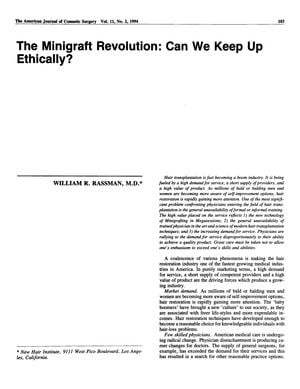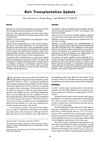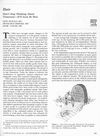The Minigraft Revolution: Can We Keep Up Ethically?
June 1994
in “
The American Journal of Cosmetic Surgery
”

TLDR The article emphasizes the need for proper training and ethical practice in hair transplantation to prevent poor outcomes and psychological harm to patients.
In 1994, the field of hair transplantation was rapidly expanding due to increasing demand, limited availability of skilled providers, and the high value placed on hair restoration services. The introduction of minigrafting in megasessions was a significant advancement, but there was a notable lack of formal training for physicians entering this area, leading to ethical concerns. Physicians were eager to meet the market demand, but this eagerness sometimes outpaced their ability to deliver quality results. The article highlighted the importance of honesty, patience, and commitment to achieving results that meet patient expectations in hair transplantation, a process that is not short-term and requires a skilled team. The author, William Rassman, M.D., emphasized the need for proper training and cautioned against allowing enthusiasm to exceed skill, as poor outcomes could result in psychological trauma for patients and ethical dilemmas for practitioners. The industry faced challenges such as patient and physician education, staff training, and market penetration, but the potential for high remuneration was driving rapid growth.




